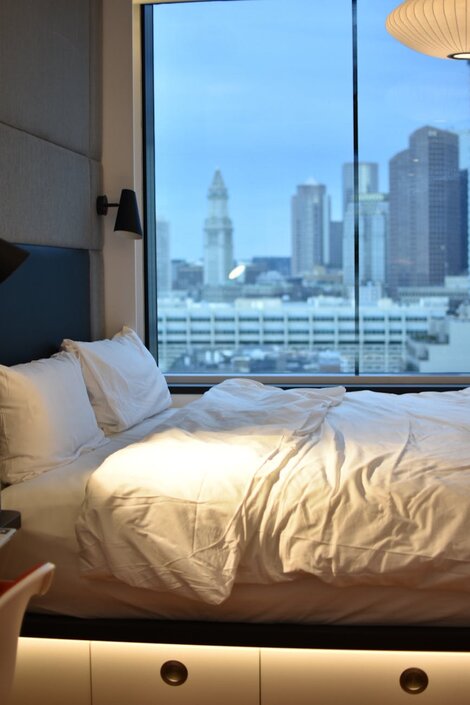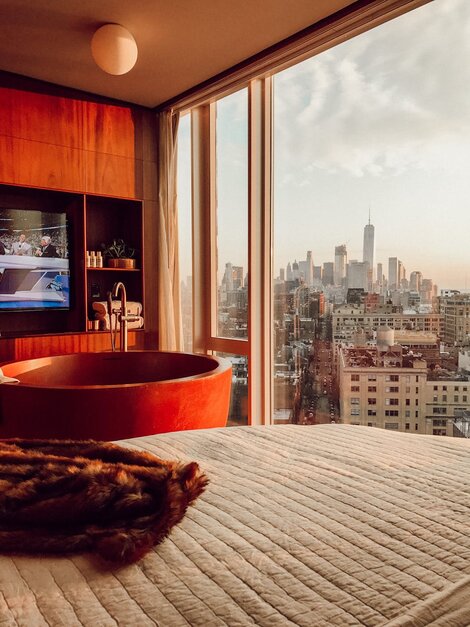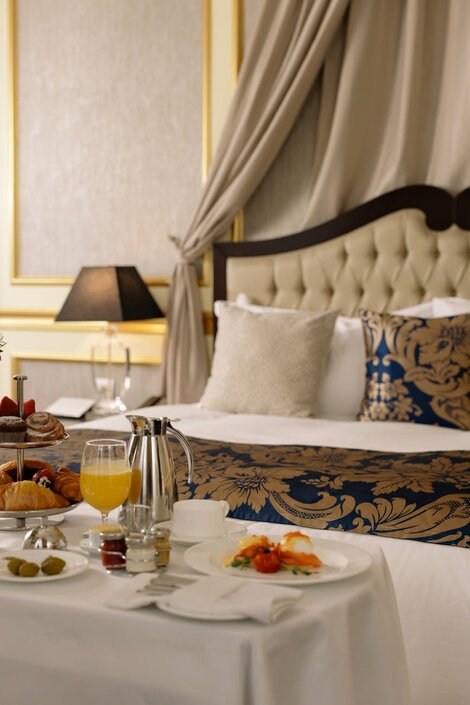The Different Types of Rooms in the Hotel Industry
What are the types of rooms in a hotel?
Most properties will offer a mix of room types designed to serve different guest needs. But calling something a “Single Room” or a “Suite” isn’t enough anymore, context is everything.
A breakdown of standard room types:
1
Single Room
One bed, often for solo business or leisure travellers.
2
Double Room
One double or queen bed, ideal for couples or two-person stays.
3
Twin Room
Two single beds. Preferred by friends, siblings, or corporate guests.
4
Triple Room
Three beds or a combination that accommodates three.
5
Studio Room
Sleeping area with limited kitchenette setup.
6
Suite
A separate bedroom and living space. Sometimes includes a kitchenette or dining area.
Beyond the basics, many properties also offer specialised or less common room types that reflect location, service level, or architectural quirks:

Cabana Room: Typically located poolside with direct outdoor access.

Lanai Room: Features a private outdoor space like a balcony or patio, common in resort destinations.

Accessible Room: Designed to meet accessibility standards with features such as wider doorways and roll-in showers.

Hollywood Twin Room: Two single mattresses on a shared king bed base, which can function as one or two beds.

Duplex or Loft Room: Two-level room with a staircase separating sleeping and living areas.
These types are consistent across most hotels globally. But how each property defines, styles, and sells them varies widely.
With RoomStay, hoteliers can manage naming conventions across platforms and build clearer paths to conversion, with no disconnect between what’s advertised and what’s experienced.

Types of rooms by layout and occupancy
Room size and occupancy are non-negotiables for most guests. When booking for two, travellers filter by bed size. When travelling with kids, capacity becomes the first priority. Yet many hotel websites still bury this information.
Here’s a quick reference:
- Queen Room: One queen bed, up to 2 adults.
- King Room: One king bed, up to 2 adults.
- Twin Room: Two singles, up to 2 adults.
- Triple Room: Three separate beds or a double + single.
- Family Room: A queen and 2 singles, or other 3. 5 person layouts.
Interconnecting Rooms: Two adjacent rooms with an internal door.
Clear communication of room layouts = fewer questions, less friction, more conversions. RoomStay’s structured content system helps you highlight these differences across every touchpoint. with zero reliance on PDFs, image captions, or long descriptions that nobody reads.
Types of rooms in a 5-star hotel
At the top end of the market, hotel room types are as much about status and experience as they are about size. Naming, presentation, and value stacking do a lot of the heavy lifting.
Common 5-star room types include:
Deluxe Room
Often slightly larger with better finishes or location.
Club Room
Includes lounge access, late checkout, and higher-tier amenities.
Junior Suite
Open-plan layout with a lounge area.
Executive Suite
Bedroom plus separate living/dining area.
Presidential Suite
Top-floor, multiple rooms, bespoke services.
Penthouse Suite
Highest-floor location with premium views, expansive layout, and luxury finishes. Often overlaps with Presidential in some hotels.
Upscale properties often differentiate with the small stuff, like marble bathrooms, personal concierge service, private elevators and exclusive in-room amenities. RoomStay allows for this nuance to be translated clearly in both backend systems and customer-facing listings.
Hotel room type classification
Beyond the label, the hotel room type classification helps with yield, segmentation, and channel management. It also sets the foundation for price positioning and upsell logic.
Typical criteria include:
- Size (e.g. 18 sqm vs 42 sqm)
- View (e.g. garden, city, sea)
- Bed configuration
- Amenities included (e.g. spa bath, desk, balcony)
- Floor level or section of the hotel
For teams, consistent classification keeps things tight across PMS, CRS, and website listings. For guests, it avoids post-booking confusion and check-in complaints.
Common PMS room codes:

Room status codes: What is the 7 room status?
Behind the scenes, room status determines what’s available to book and what isn’t. It’s essential for housekeeping, front office, and yield decisions.

Small Hotels, Big Results:
RoomStay's Booking Engine Revolution
for Small Hotels
There are seven most used statuses:
- Vacant Ready (VR): Available and clean.
- Occupied (OCC): Guest currently checked in.
- Vacant Dirty (VD: Needs cleaning before next guest.
- Out of Order (OOO): Major issue, not bookable.
- Out of Service (OOS): Minor issue, off-market temporarily.
- Blocked (BLK): Reserved for a group, upgrade, or internal use.
- Under Inspection (UI): Awaiting supervisor check post-clean.
RoomStay syncs with your PMS to prevent double bookings and keep inventory accurate in real time.
Hot tip: What is the most common hotel room? It’s the standard queen or king. This room type delivers a reliable mix of comfort, value, and familiarity and it’s often the first option guests click on. Because it’s so widely booked, it’s also your biggest upsell opportunity. With RoomStay, you can add smart prompts for extras like early check-in or a better view, right when guests are deciding. Small nudges at the right moment can drive a bigger booking value without adding friction.
Helping guests choose the right room
Guests aren’t overwhelmed by choice. They’re overwhelmed by poor presentation. It’s not about offering more room types, it’s about showing the right ones, clearly and confidently.
Room selection is no longer just a box to tick. For many guests, it’s the moment that determines whether they’ll move forward with a booking. Unclear room descriptions, mismatched visuals, or vague inclusions create hesitation and hesitation leads to drop-off.
That hesitation? It costs you conversions.
Here’s how to fix it:
- Name with purpose: Use short, searchable, intuitive labels. A ‘Family Courtyard Queen’ says more than ‘Room 216.’
- Show, don’t tell: Use imagery, icons, and bullet-point features to reduce guesswork.
- Clarify capacity: Make occupancy limits and bed configurations unmissable.
- Upsell with context: Integrate premium add-ons into the room selection flow. Not as a pop-up. As a natural next step.
What hotel star ratings mean for you as a hotelier
If you're running a 2-star motel or a luxury five-star resort, your rating affects:
- Guest expectations
- OTA filters and search visibility
- Price benchmarking and competitive research
- Direct booking confidence
A strong star rating builds trust, but delivering on that promise is what matters. A five-star badge with a two-star experience is worse than no badge at all.
Missing a rating altogether or sitting at the lower end could also mean losing out on filtered searches and first impressions.
How do I find out what my current hotel star rating is?
The easiest way to check your property's current hotel star rating is to look at your listing on official tourism or ratings body websites. In Australia, for example, Star Ratings Australia publishes verified ratings for accredited properties.
If you're listed on OTAs like Booking.com or Expedia, they may display a star rating, but this isn’t always based on official standards, it could be self-assessed or platform-determined. For a definitive answer, refer to your local tourism authority or industry regulator.
If you're unsure, contact them directly. You might need to undergo a reassessment or provide updated details about your facilities and services to get an accurate, official rating.
RoomStay gives you the flexibility to customise search filters and personalise the booking experience, reorder listings by priority, and deliver tailored room options based on guest behaviour, previous stays, or booking window.
Clarity at this stage reduces customer service calls, boosts average booking value, and builds guest confidence, all before they hit the payment screen.
Turn your room types into revenue drivers
Each room type is a product in your hotel’s catalogue. When those products are messy, inconsistent, or unclear, conversion suffers.
RoomStay helps hoteliers take control of their inventory, clean up presentations, and guide guests to the rooms that suit them best. With upsell opportunities baked in, every room becomes a chance to increase revenue without increasing effort.
Here are a few quick strategies to put into practice:
- Promote suites closer to the check-in date when unsold premium inventory can be upgraded.
- Bundle family rooms with value-adds like free breakfast or parking during school holidays.
- Highlight accessible room options clearly to avoid booking hesitation or churn.
- Personalise upsells for returning guests based on past room types or booking patterns.
- Use limited-time offers to push premium rooms during shoulder seasons.
Want to convert more browsers into bookers? Book a demo or explore the RoomStay platform today.